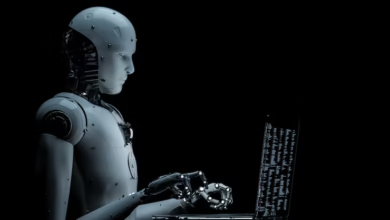Why Do So Many Americans Believe That Car Payments Are Just a Normal Way of Life?

In the modern United States, the idea of owning a car is deeply embedded in the fabric of daily life. Cars are not merely transportation; they symbolize freedom, independence, and success. Yet, for millions of Americans, the car ownership experience comes with a significant financial commitment: the car payment. For many, monthly car payments are seen as a normal and inevitable part of adult life. But why is this the case? Why do so many Americans accept the idea that having a car payment is simply part of the routine?
In this article, we will explore the psychological, economic, and cultural factors that have contributed to the normalization of car payments in America. From the allure of car ownership to the changing nature of credit and financing, understanding the root causes of this phenomenon can shed light on a wider issue of consumer behavior in the United States.
1. The American Dream and Car Ownership
The notion of the American Dream has long been associated with individual success, self-reliance, and upward mobility. For many, owning a car is an essential symbol of that dream. It represents not only personal freedom and convenience but also a marker of success. The car, in many ways, is an extension of one’s identity in America. Whether it’s the latest model or a reliable used car, owning a vehicle signals a level of stability and financial independence.
In this context, the idea of taking out a loan or committing to monthly payments to afford a car doesn’t seem unusual. For many Americans, purchasing a car is just another milestone in their pursuit of the American Dream. Whether it’s for commuting to work, running errands, or enjoying leisure activities, a car is considered essential, and as such, people are more willing to finance their vehicle purchase through loans or payment plans.
2. The Rise of Car Financing and Credit Availability
One of the most significant reasons why car payments have become so normalized is the rise of car financing options. Over the past few decades, the availability of credit has increased dramatically. In fact, car loans are now one of the most common types of consumer debt in the United States. According to recent data from the Federal Reserve, over 80% of new car purchases are financed through loans or leases.
The increased availability of credit has made car ownership more accessible than ever. Financial institutions, banks, and dealerships have made it relatively easy for consumers to borrow money for a car purchase. With low-interest rates and long loan terms, many buyers are able to afford vehicles they might not otherwise have the means to purchase. In essence, the car payment becomes a manageable, predictable expense, which allows consumers to enjoy the benefits of car ownership without needing to pay the full price upfront.
The widespread use of credit and installment payments has contributed to the normalization of car payments. It’s no longer seen as unusual to take out a loan for a car; in fact, it’s almost expected in a society where credit is widely used for a variety of purchases, from homes to electronics.
3. The Evolution of Car Prices and Loan Terms
Over the years, the price of cars has steadily increased. While wages have remained relatively stagnant for many middle-class Americans, the cost of vehicles has risen significantly, making it harder for people to purchase a car outright. In 2023, the average price of a new car in the U.S. exceeded $48,000, a substantial increase compared to just a decade ago.
As car prices have gone up, so have the average loan amounts. To cope with these higher prices, consumers have turned to longer loan terms. Today, it is not uncommon for car loans to extend to 72 months or even 84 months (6 to 7 years). This means that car buyers are locking themselves into long-term financial commitments, with monthly payments that can extend for the better part of a decade. While the monthly payment may seem manageable, the long duration of the loan means that many Americans find themselves in debt for a prolonged period of time.
The increasing prices of vehicles, coupled with the temptation to stretch loan terms to make payments more affordable, has cemented the idea that car payments are a normal part of life. It’s not just a one-time expense; for many, it becomes a long-term financial commitment that shapes their personal finances.
4. The Psychological Effect: “Keeping Up with the Joneses”
Another key factor in the normalization of car payments is the societal pressure to conform to certain standards of living. In the U.S., there is a cultural expectation that people should own a vehicle that matches their lifestyle and status. The idea of “keeping up with the Joneses” plays a significant role in this phenomenon. People often feel the need to drive the latest model or a high-end car to fit in with their peers or colleagues.
Advertising and marketing also contribute to this pressure. Car companies spend billions of dollars annually promoting the idea that owning a new car is an essential part of success. These advertisements often emphasize the idea that a car is not just a mode of transportation but a reflection of one’s success, personality, and social status. In many cases, people are conditioned to believe that a new car is a reward for their hard work, even if it means taking on a large monthly payment.
This psychological pressure to own a nice car can be difficult to resist. When faced with the option of paying for a car over several years, many consumers rationalize the purchase, convincing themselves that it’s a necessary expense. In the end, the desire to meet societal expectations leads many people to accept car payments as a normal, unavoidable part of life.
5. The Role of Leasing in Car Ownership
Leasing has also contributed to the normalization of car payments in the United States. For many people, leasing a car allows them to drive a new vehicle every few years without having to commit to long-term debt. Lease payments are often lower than monthly loan payments, which makes them an attractive option for those who want a new car but don’t want to take on the financial burden of a large loan.
However, leasing comes with its own set of challenges. While the monthly payments may be lower, leasing means that consumers are essentially renting the car for a set period, after which they must return it or purchase it outright. The concept of “never owning” a car, combined with the recurring cycle of lease payments, reinforces the idea that car payments are simply a regular part of life. The leasing model perpetuates the mindset that it is normal to have a monthly payment tied to car ownership, whether through a loan or lease.
6. Car Payments and the American Economy
In the context of the broader American economy, car payments have become a reflection of the consumer-driven economy that dominates the country. Americans, on average, carry more debt than citizens in many other countries, and car loans are a significant part of this debt load. The culture of consumerism has created an environment where borrowing money to buy things, including cars, is not only accepted but often expected.
The U.S. economy is largely driven by consumer spending, and car purchases are a major part of that. The ease of financing, coupled with the widespread desire to own a car, fuels a cycle where consumers are encouraged to take on debt. This cycle of borrowing and spending supports the economy but also contributes to the normalization of car payments as a standard part of life.
7. Conclusion: Breaking the Cycle
The belief why do so many americans believe that car payments are just a normal way of life? is deeply rooted in cultural, economic, and psychological factors. From the allure of car ownership to the availability of credit and the pressure to conform to societal expectations, it’s clear why many Americans accept car payments as a natural part of adulthood. However, it’s essential to recognize that this mindset can have long-term financial consequences.
For those who wish to break free from the cycle of perpetual car payments, financial literacy and planning are key. By saving for a car purchase, considering used cars, or exploring alternative transportation options, individuals can reduce their reliance on credit and avoid long-term debt commitments. While car payments may seem normal, they don’t have to be inevitable. With the right mindset and strategies, it is possible to take control of one’s finances and make more conscious choices when it comes to car ownership.





